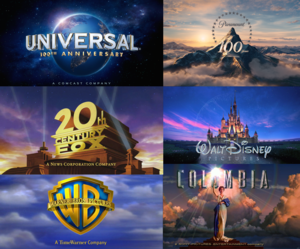Different Types of shots
Long Shots:
Extreme Long Shot (or extreme wide shot)- This type of shot provides a lot of context for the viewer as it covers such a large area, where a lot of different events can be taking place at once. The shot is able to show the subject (or focal point) and what surrounds it, which is what gives away more information and context to the audience.
Long shot (or full body shot)- Like in the example shown, the long shot features the whole figure/subject, so the main focus is now on the subject, and not the environment around them. The subject is placed in relation to the environment around them, for example, in this image we can see that the character (Jack Sparrow) is a pirate, so it makes sense that he is seen on a beach or by the ocean. This shots also feature a lot of action, which is also shown in the
example on the left.
Long shots are also very similar to (or in most cases the same as) wide shots, as the subject takes up the whole frame, the bottom of their feet is clearly visible and their surroundings can also be seen.
These shots are very common is showing a large structure, for example overlooking a city or in fantasy films (e.g. Labyrinth and the castle- shown below) when a castle is featured. They can also be used as an establishing shot, used to set the scene and to introduce the audience to the story-line and setting.
 Mid (long) shot (or 3/4 shot)- This shot frames the subject from the knees (or waist) up, and can sometimes feature more than one subject, which creates more focal points for the viewer. As well as the long shot, this shot can also include a lot of action, and in a clip the shots may vary between the two. This shot acts as a continuation of the story from other shots, focusing on the subject and their actions or dialogue.
Mid (long) shot (or 3/4 shot)- This shot frames the subject from the knees (or waist) up, and can sometimes feature more than one subject, which creates more focal points for the viewer. As well as the long shot, this shot can also include a lot of action, and in a clip the shots may vary between the two. This shot acts as a continuation of the story from other shots, focusing on the subject and their actions or dialogue.




Comments
Post a Comment